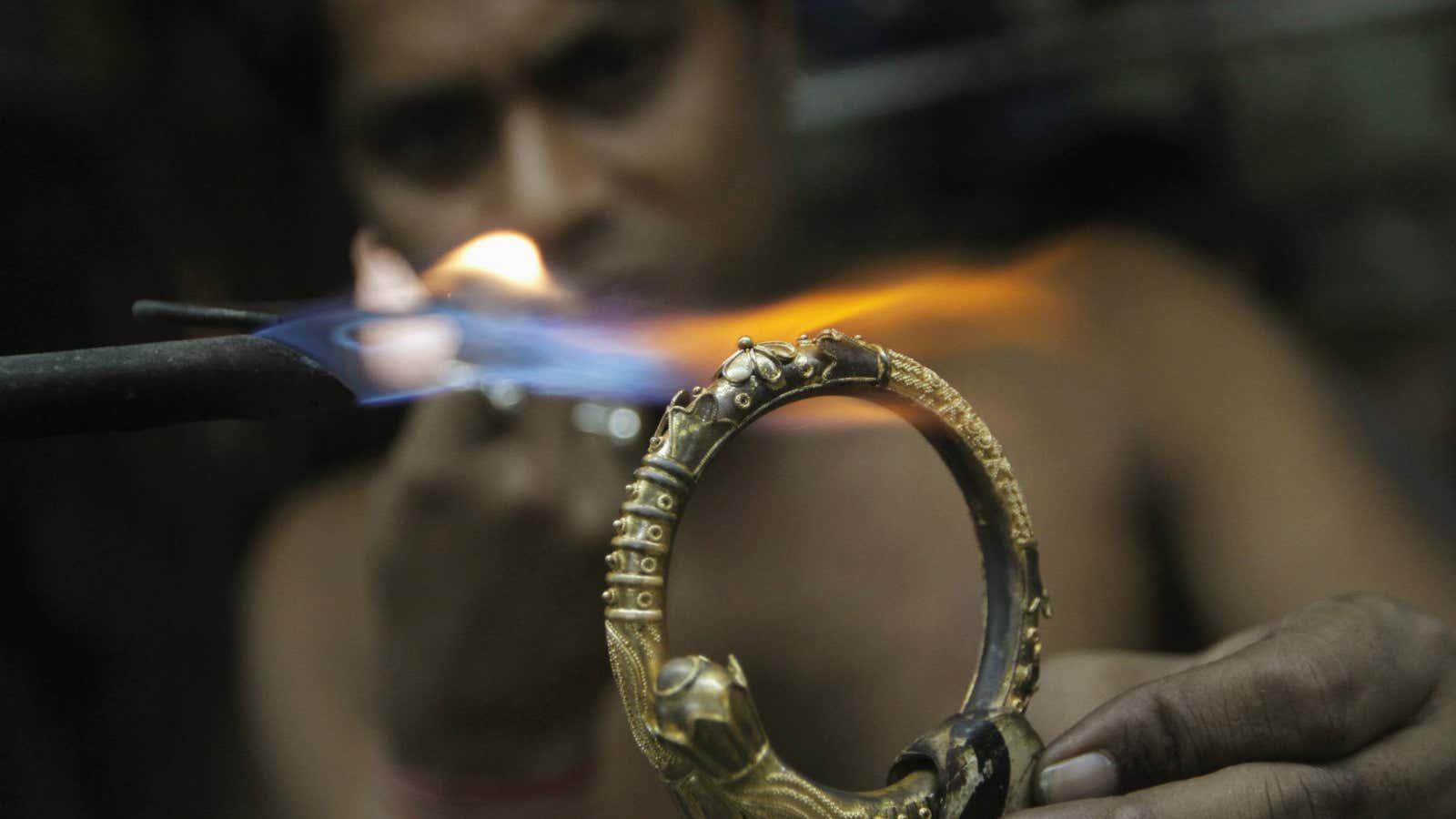An ancient Indian gold mine, which later thrived under India’s colonial British administration, is likely to be revived by the Narendra Modi government.
The Kolar gold mines, located about 100 kilometres east of Bengaluru in the southern Indian state of Karnataka, stopped production in 2001 because of a crash in gold prices and operational inefficiencies. These mines, which yielded about 25 million ounces of gold in over 150 years, will soon be restarted by the ministry of mines.
In February, Balvinder Kumar, India’s mines secretary, told Reuters that the government plans to auction the Kolar mine, along with two others.
On April 11, Australian miner Citigold Corp said it had formed a consortium with the Essel group, an Indian conglomerate, to bid for the mining assets in Kolar that belong to state-run Bharat Gold Mines Ltd (BGML).
“The purpose of the alliance is to acquire the assets of BGML from the government of India, which had previously operated the mines as a public sector undertaking,” the statement said. An email sent to the Essel group hasn’t been answered yet.
History
Kolar’s fame is seven centuries old. Gold from here was said to have been used in the Indus Valley civilisation (BCE 2600-1900). Roman historian Pliny referred to gold mines in the area in CE 77.
Kolar’s modern history begins with the British firm John Taylor and Sons. In 1880, the engineering firm was hired to scout for gold in a last-ditch attempt to find the precious metal at the mine after other prospectors are failed. They struck gold and a mini-boom followed.
Commonly referred to as Kolar Gold Fields (KGF), in 1902, it became one of the first Asian cities to be electrified. Following India’s independence, the mines were nationalised in 1956.
In 1970, BGML took control of the mines. The firm wasn’t much of a success as aggressive hiring hit profits. In 1989, the company’s net worth turned negative—that is, its liabilities were more than its assets. In subsequent years, it was declared sick and forced to cut its employee strength from over 8,800 to around 3,500. In 2001, operations were stopped and the BGML factory shut shop.
Since then BGML employees have taken legal recourse and the 12,713-acre KGF is now mostly a ghost town.
Golden chance
If the mines reopen, India may be able to provide for at least part of its ever-rising gold demand—which is the world’s second-biggest behind China’s. In 2015, demand for the yellow metal rose 2% to 848.9 tonnes in India, according to the World Gold Council.
Much of the domestic demand today is being met through imports—900 tonnes in fiscal 2015—even as thousands of tonnes are stashed away in its many temples.
In 1905, India was the world’s sixth-largest gold producer, at an annual 19.5 tonnes, according to the Geological Survey of India. By 2007, production fell to 2.5 tonnes. Today, India isn’t anywhere on the list of the world’s top gold producers, mining less than a two tonnes annually.
If production is restarted at KGF, it could help cut India’s $35-billion (Rs2.3 lakh crore) gold-import bill.
Talk about golden opportunities.
